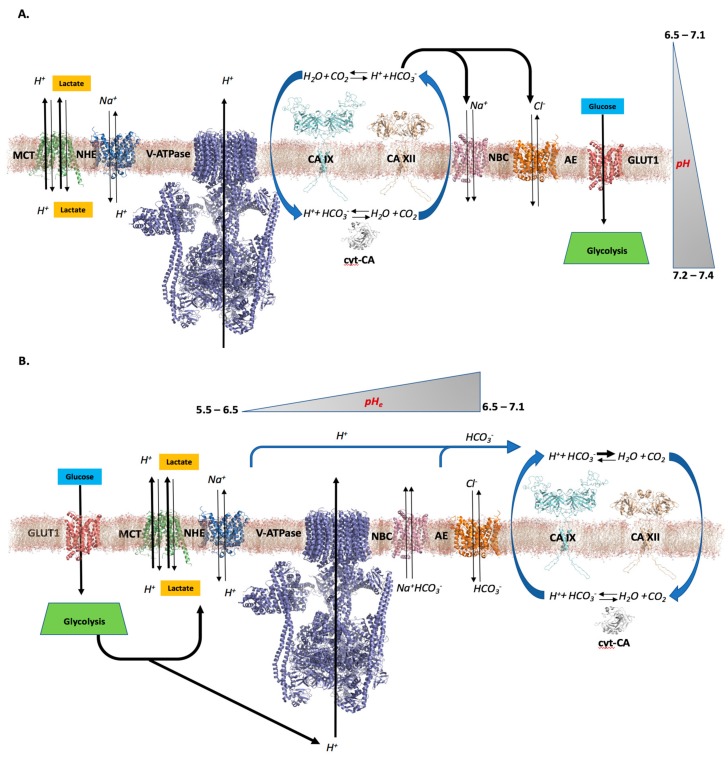Figure 1.
Illustrations of Hypothesis 1 (A) and Hypothesis 2 (B) to model the functional role of CA in the hypoxic tumor microenvironment. (A) Hypothesis 1: CA IX and XII (cyan and tan, respectively) are located on the extracellular membrane and adjacent to transporters involved in pH regulation. Here, CA IX and XII act in conjugation with cyt-CAs (grey) to cycle substrates of water, CO2, HCO3−, and protons, to maintain the differential pH microenvironment. (B) Hypothesis 2: Extracellular CA IX and XII act to raise pHe that has been reduced to levels < 6.0 due to excess expulsion of glycolysis byproducts. In this case, HCO3− dehydration and proton sequestration are catalytically favored by CA IX and XII. Alternatively, cyt-CAs act to convert excess CO2 to HCO3− to buffer pHi and provide substrates to be transported to the extracellular surface to be utilized by CA IX and XII. Transporters shown are MCT (green), NHE (blue), V-ATPase (purple), NBC (pink), AE (orange), and GLUT1 (red). Structural models were generated using PyMol [119]. Models of CA IX and XII were generated using PDBs 5DVX [51] and 1JCZ [120], respectively. PDB 3J9T was utilized to model V-ATPase [121], and PDB 4YZF [122] was utilized to generate models of AE, NBC, and NHE. For modeling of MCT and GLUT1, PDBs 1PW4 [123] and 4PYP [124] were used, respectively. To represent cyt-CAs, PDB 3KS3 [125] was utilized.

